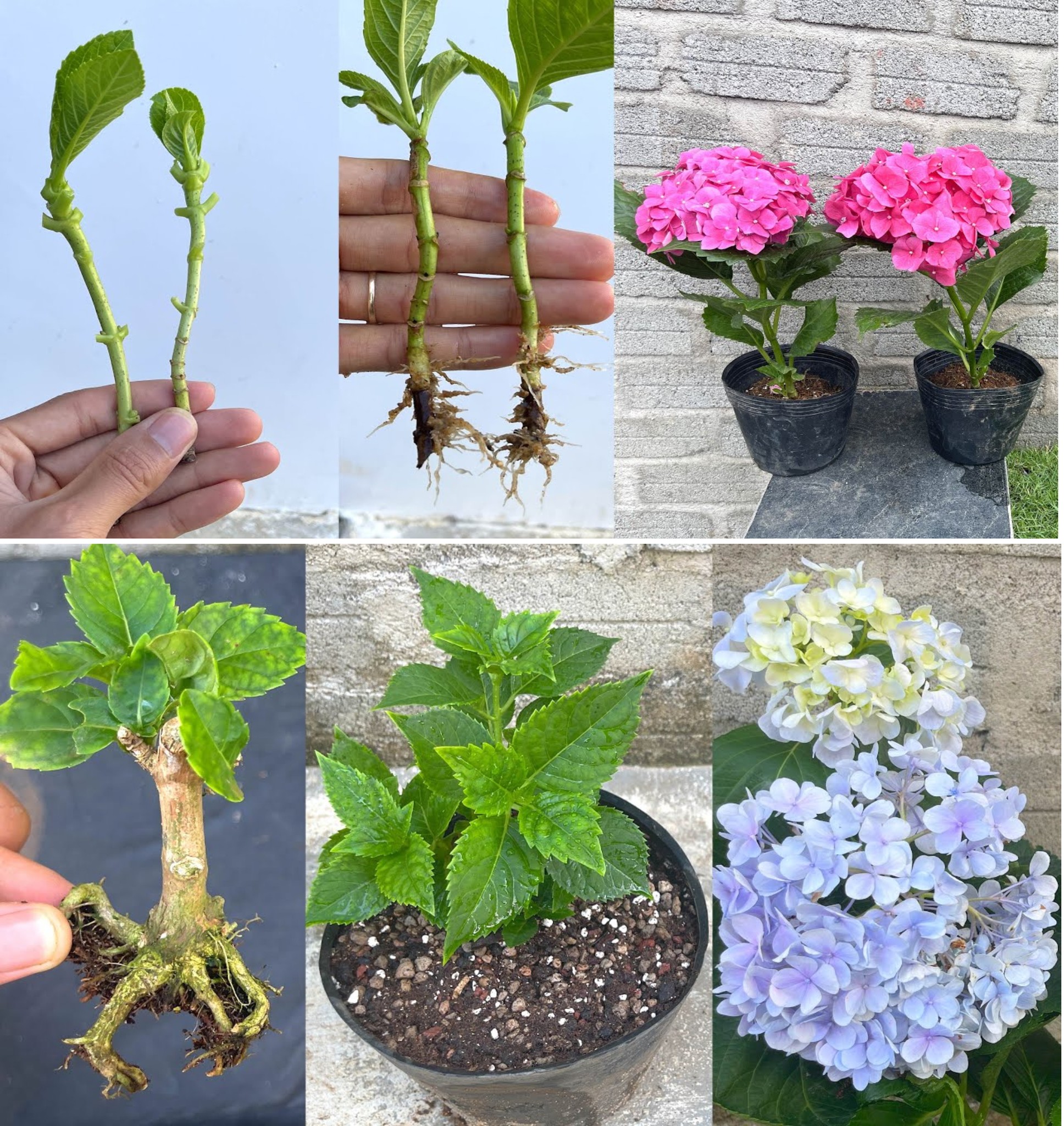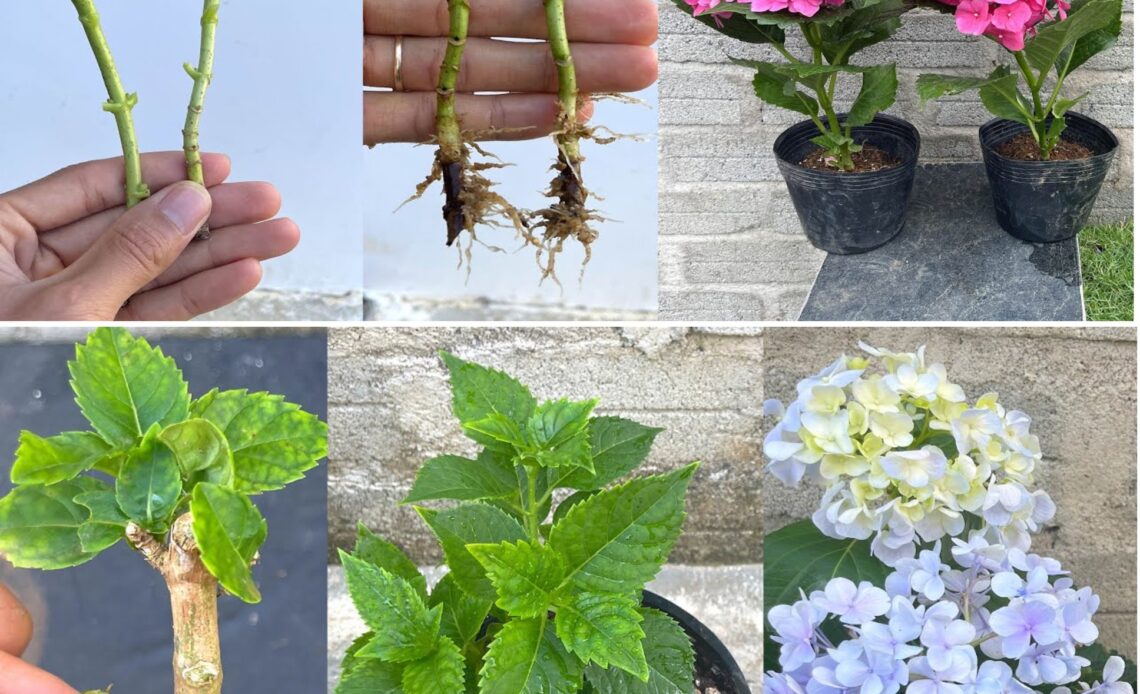
Hydrangea Gardening Guide: A Symphony of Colors in Your Space
Embracing a spectrum of hues from lilac to blue, the hydrangea plant is not only aesthetically pleasing but also versatile enough to thrive in a pot. Surprisingly, the colors it flaunts are influenced by the acidity of the soil it calls home. Preferring the shelter of shade over direct sunlight, this enchanting plant has specific watering needs and requires timely pruning. Let’s delve into the secrets of fostering optimal growth conditions and nurturing your hydrangea with care.
Introduction to Hydrangeas: Nature’s Color Palette
Hydrangea (Hydrangea macrophylla), with its origins in Asia, stands as an ornamental beauty thriving in shaded and rich soil. Robust and low-maintenance, it gracefully weathers winter and ushers in spring with a vibrant burst of colors.
Choosing the Right Environment: A Shade-Loving Beauty
Being a sciaphilous plant, hydrangea shies away from direct sunlight. Even without a south or east-facing balcony or lawn, guaranteed blooms are achievable. Joining the ranks of shade-loving companions like camellias, astrantias, bellflowers, viburnums, and ferns, hydrangea thrives in the cool embrace of shade.
Cultivating Hydrangeas: Planting Wisdom
Hydrangeas can spring forth from seeds, cuttings, or nursery-bought plants. Harvesting seeds post-flowering and allowing them to dry facilitates homegrown propagation. Autumn, specifically October, is ideal for planting, while cuttings find their best home in the fall. Choose an acidophilic soil, ensuring consistent moisture without waterlogging.
Temperature and Exposure: A Balancing Act
Avoid subjecting hydrangea to direct sunlight; instead, opt for partial shade. The plant flourishes in a cool, humid climate with temperatures around 18 degrees. Winter calls for protective mulching to navigate through harsh weather conditions.
Growing Hydrangeas in Pots: Container Elegance
For potted hydrangeas, select spacious containers with proper drainage. A pot diameter of 30-40 cm is recommended. Certain hydrangea varieties, such as Azores hydrangea and paniculate hydrangeas, lend themselves well to container living.
Hydrangea Care: Tending to Nature’s Masterpiece
The care regimen for hydrangeas hinges on the specific variety and environmental conditions. Tailor your care routine to address the unique needs of each hydrangea variety.
Watering: Nourishing the Roots
Hydrangeas, like many plants, crave consistent moisture. Keep the soil consistently moist but not waterlogged. Drip or foot irrigation is preferable to prevent wetting leaves and flowers, minimizing the risk of fungal diseases.
Pruning: A Dance of Seasons and Varieties
Pruning strategies vary based on the hydrangea type. Azores Hydrangeas benefit from post-flowering pruning for prolific blooms the following year. Paniculate hydrangeas, flowering on new branches, allow for winter or spring pruning. Engage in biannual pruning in February, thinning out the plant by removing weaker branches. A second, less intensive pruning in late September focuses on larger branches.
Fertilization: Fueling Flowering Splendor
Fertilize hydrangeas in spring (March-April) and summer (June-July) to support their flowering prowess. Opt for fertilizers rich in potassium or specifically designed for acidophilic plants.
Flowering: Nature’s Symphony Unveiled
The flowering timeline varies by species and ranges from spring to fall. Some varieties even boast winter blooms in temperate climates. Colors span a spectrum of white, pink, blue, purple, red, green, and multi-colored, casting a spell of natural enchantment.
Winter Care: Shielding Against the Chill
Guard hydrangeas against abrupt temperature shifts during winter. Employ mulch or straw to insulate roots from the cold. A protective fabric or fleece cover shields them from frost.
Diseases and Pests: Vigilance in Gardening
While generally hardy, hydrangeas may encounter challenges due to external factors or inadequate care. Yellowing leaves caused by limestone in water can be remedied by switching to rainwater. Fungal diseases manifest as yellow-greenish spots and can result from water imbalances. Vigilance against pests like scale insects and red spiders is crucial to prevent yellowing and leaf drop.
Embark on the captivating journey of hydrangea cultivation, where nature’s colors unfold in your very own space. This guide ensures not just the vibrancy of your garden but also the joy of nurturing life from a seemingly ordinary plant.
Share Article:
